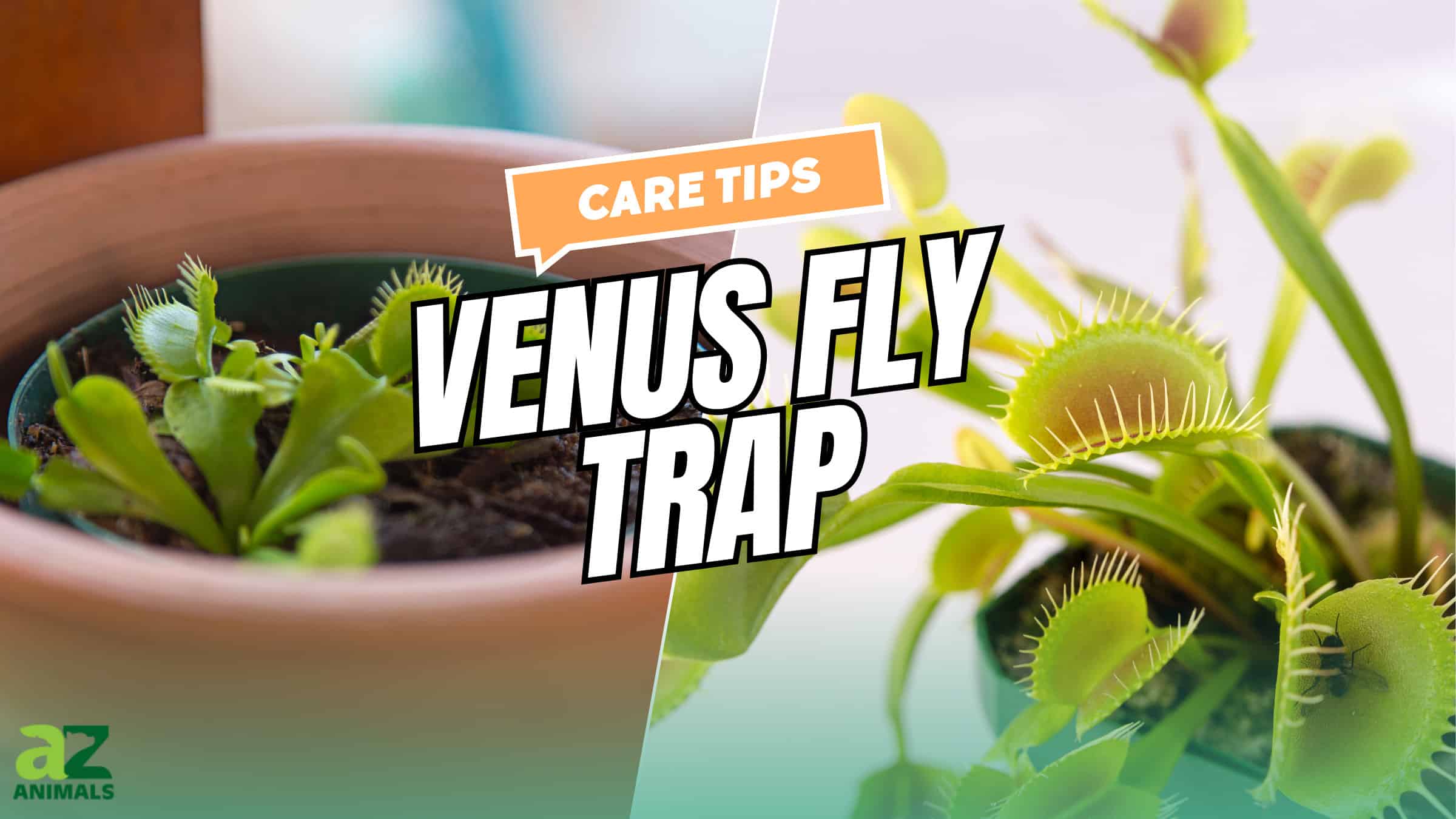Venus flytraps have been a source of fascination among humans for decades now. Although certain individuals might describe them as macabre, the truth is that these plants are a critical part of our ecosystem. While some people don’t understand the appeal at all, others are dying to get their hands on their very own. However, caring for a carnivorous plant might be intimidating at first. Let’s discuss how much water Venus flytraps really need and explore useful tips that will be sure to keep your plant thriving.
Venus Fly Traps: A Brief Introduction
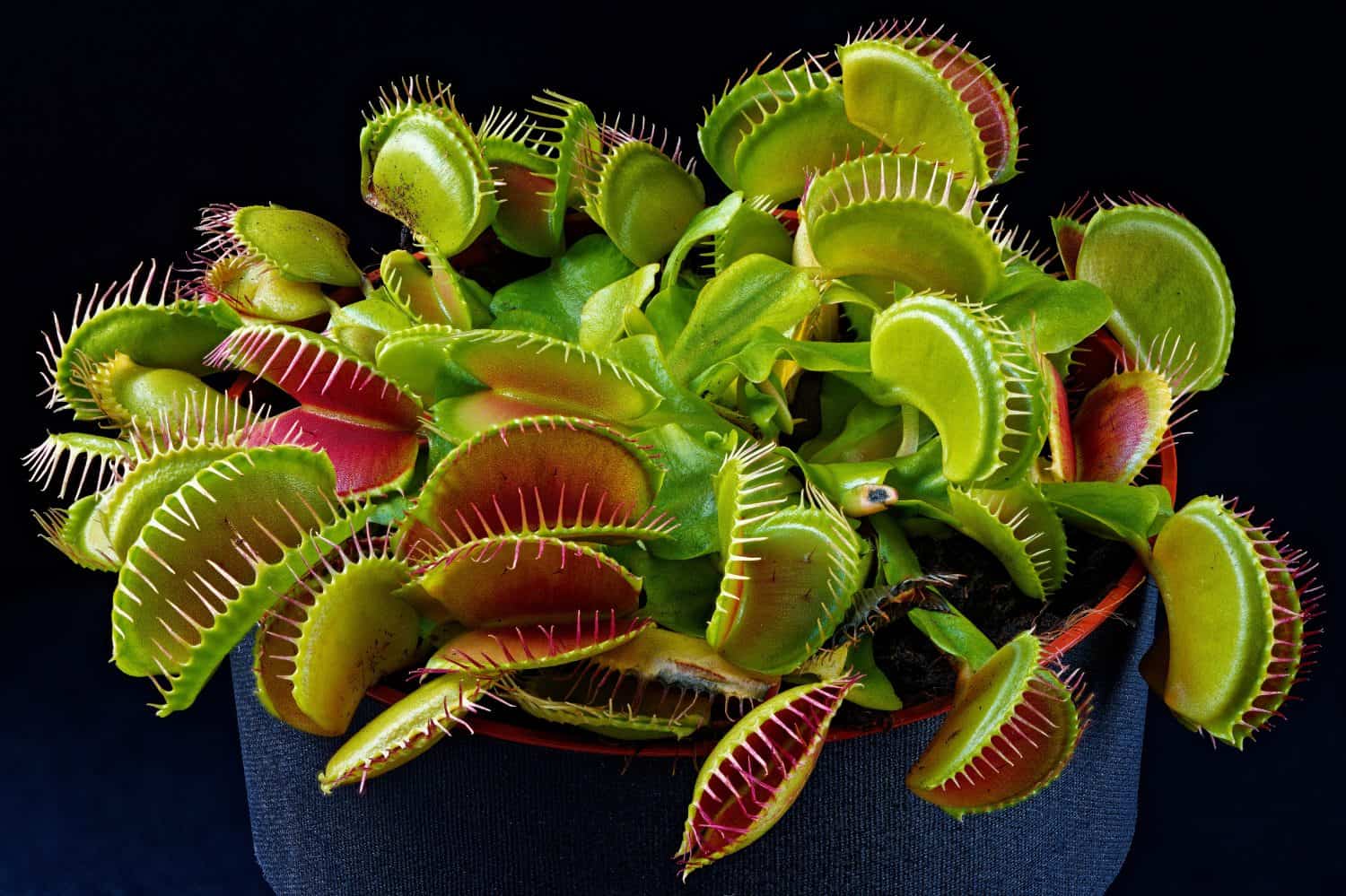
The scientific name of the Venus flytrap is
Dionaea muscipula.
©J.M.C. foto/Shutterstock.com
Let’s be honest, Venus flytraps evoke morbid curiosity within many people. However strange they may seem, these plants are just as natural as any other. In order to feed, the flytrap ensnares its prey within its two spiked hinges. The surface within the trap is covered in a thin layer of hairs, and whenever an insect comes in contact with them, the trap sends a signal to close the hinges.
In most cases, its prey are helpless and cannot fight their way out. As time passes, the insect will be slowly digested within the trap. According to the University of Tasmania, “After sealing an insect inside the snap-trap, the plant will emit digestive enzymes from specialized glands to dissolve its tough outer exoskeleton. Once the Venus flytrap has broken through that layer, it will start processing the insect’s nitrogen-rich blood, called hemolymph.” Flytraps aren’t the only carnivorous plants in the world. Others include pitcher plants, butterwort, and monkey cups.
How Often Should You Water Your Venus Flytrap?
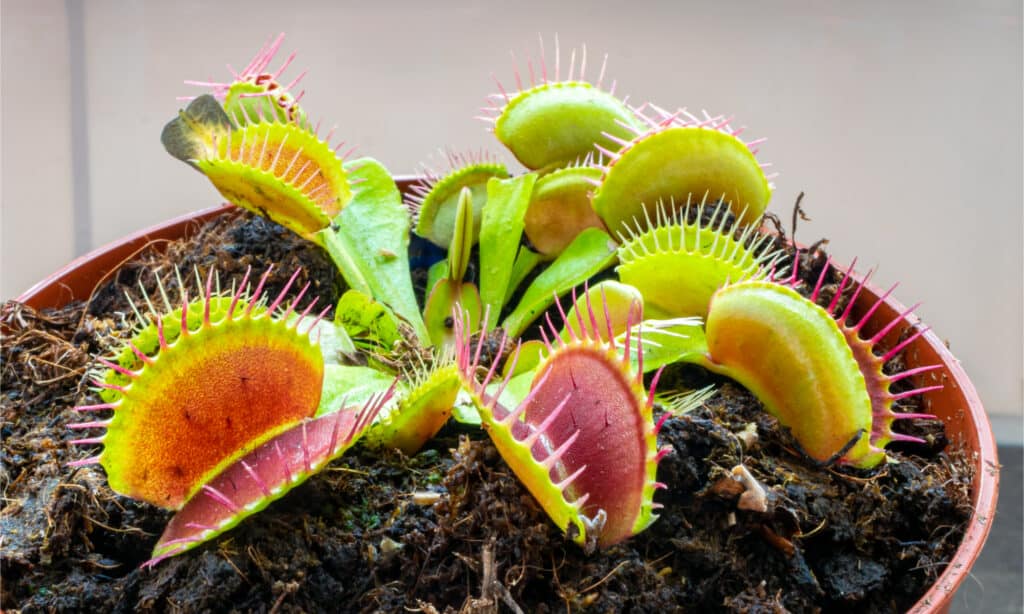
Carnivorous plants have been around for tens of millions of years.
©Menno van der Haven/Shutterstock.com
Although Venus flytraps get their nutrients from eating insects, they still require regular watering to stay healthy. On average, you should be watering your flytrap every two to three days. These plants do not fare well if left dry for too long, so be sure to stay on top of your watering schedule and stick to it. However, these plants also don’t appreciate being overwatered either. Ideally, you’ll want to strike a healthy balance between the two. A good way to test if you’re giving your plant the ideal amount of water is to pick up some soil and squeeze it gently. It should feel moist to the touch, but squeezing it should not release any excess water. Keep this in mind when caring for your plants.
Is It Hard to Care for a Venus Flytrap?

Venus flytraps are one of the most popular meat-eating plants in the world.
©Linda Blazic-Mirosevic/Shutterstock.com
Caring for a Venus flytrap is often very simple and straightforward. If you’re not used to caring for carnivorous plants, feeding them may seem daunting. However, this plant doesn’t require frequent feedings. In fact, these plants can go weeks without eating insects as long as they are properly watered and get enough sunlight. Despite this, it’s still important to feed your Venus flytrap if you notice it hasn’t caught any insects on its own in a while. House flies, beetles, and spiders will all work well if you can manage to get your hands on them!
9 Critical Care Tips That Will Help Your Venus Flytrap Thrive
1. Be Sure to Give It Plenty of Sun
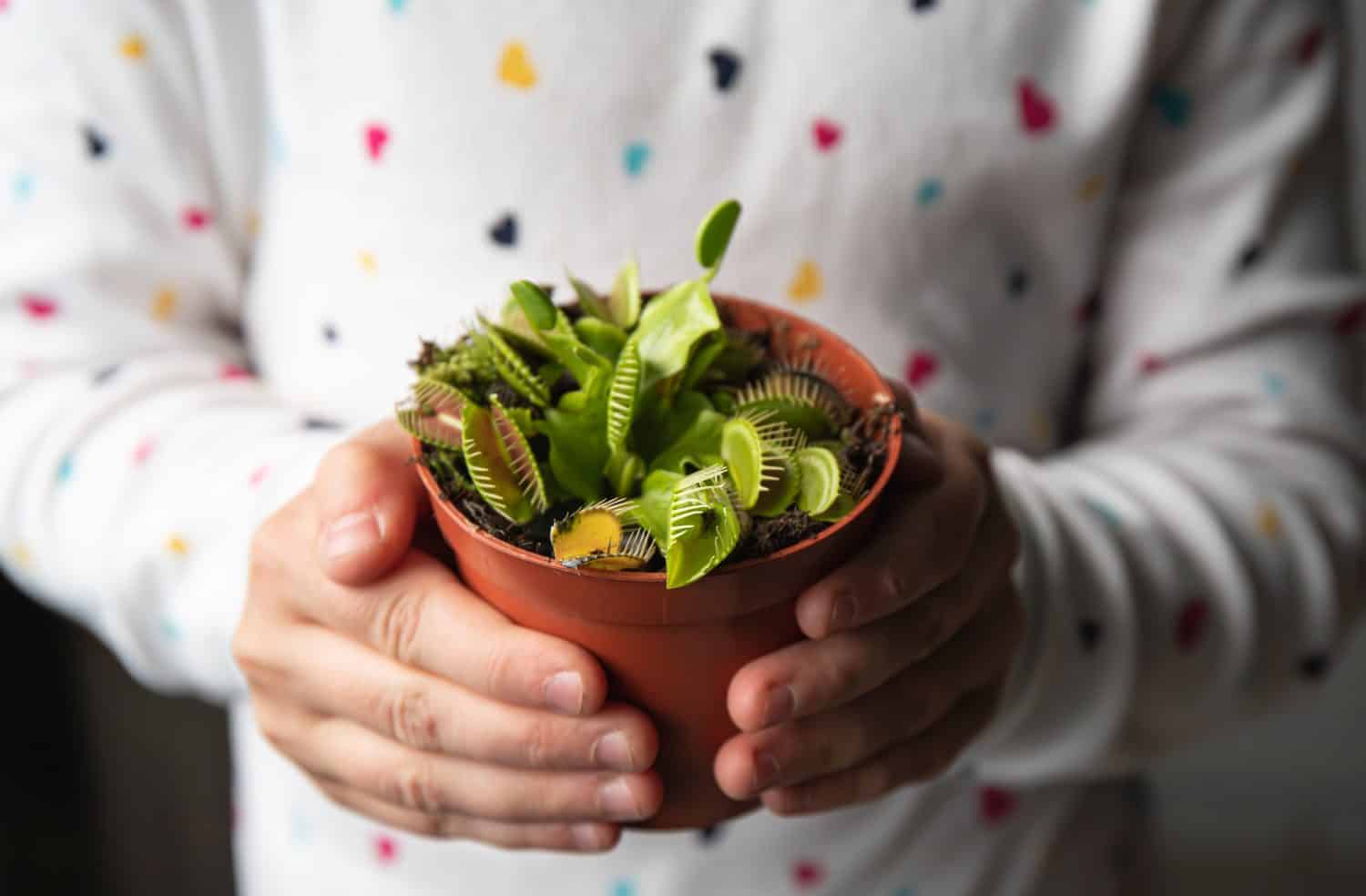
Some Venus flytraps can live up to 20 years in the wild.
©FotoHelin/Shutterstock.com
Ideally, Venus flytraps need several hours of direct sunlight every day. Put your plant on a windowsill or bring it outdoors to ensure that it’s meeting its minimum sunlight requirements.
2. Be Thoughtful About Its Location Within the Home
Keeping a flytrap in your kitchen is usually a win-win, as these plants help get rid of pesky insects. Be sure to keep your plant in an area where it gets plenty of sunlight and some insect traffic.
3. Cut off Dead Weight
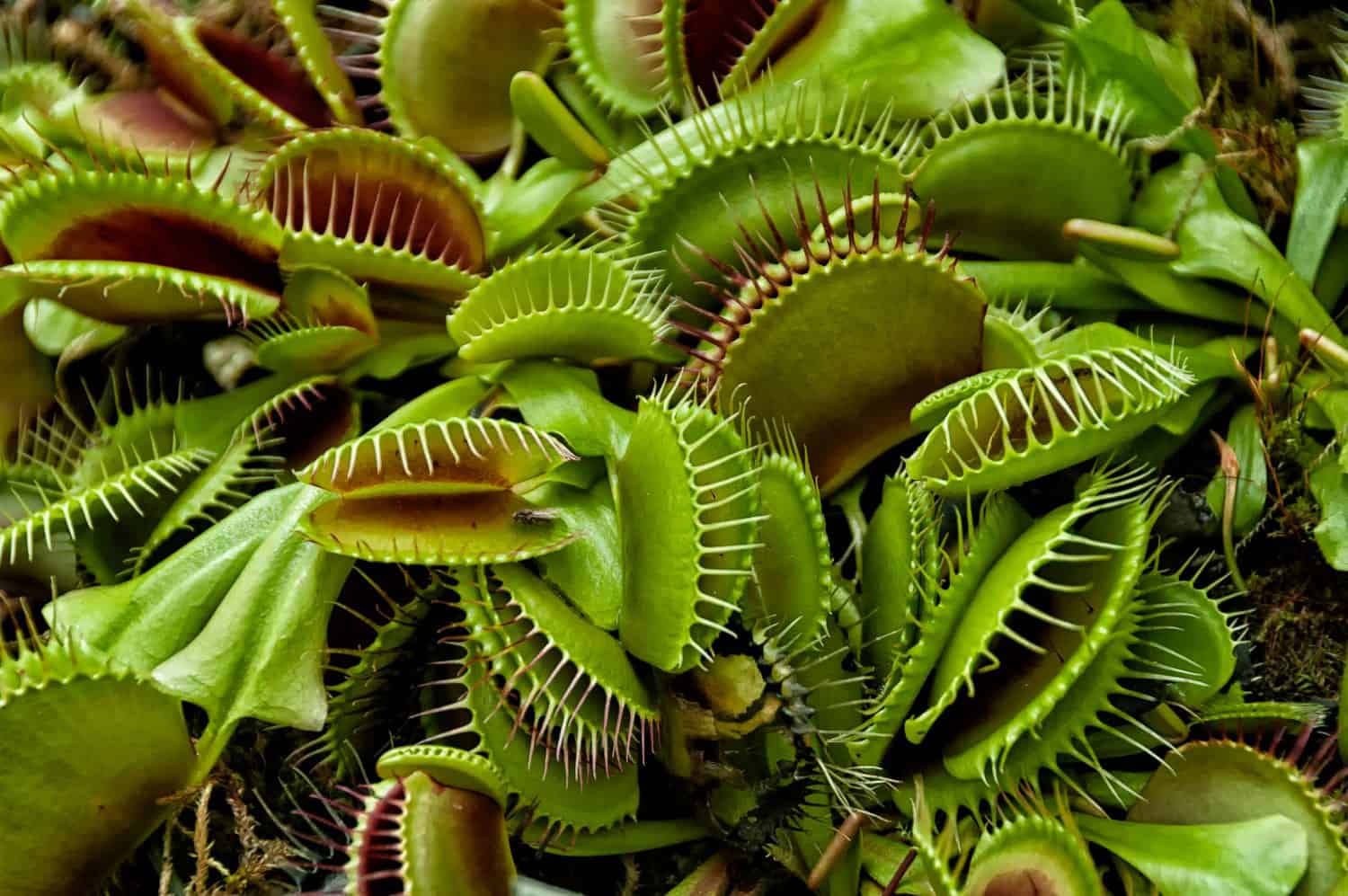
The Venus flytrap is the only plant that belongs to the genus
Dionaea.
©Barbara Ash/Shutterstock.com
It is important to prune your Venus flytrap periodically to give it a neat appearance and keep it healthy.
4. Let Sleeping Plants Lie
Never disturb or dig up a dormant Venus flytrap as it may inadvertently damage or kill it. These plants typically go dormant during the winter months and return when temperatures warm up.
5. Live Food Is Ideal
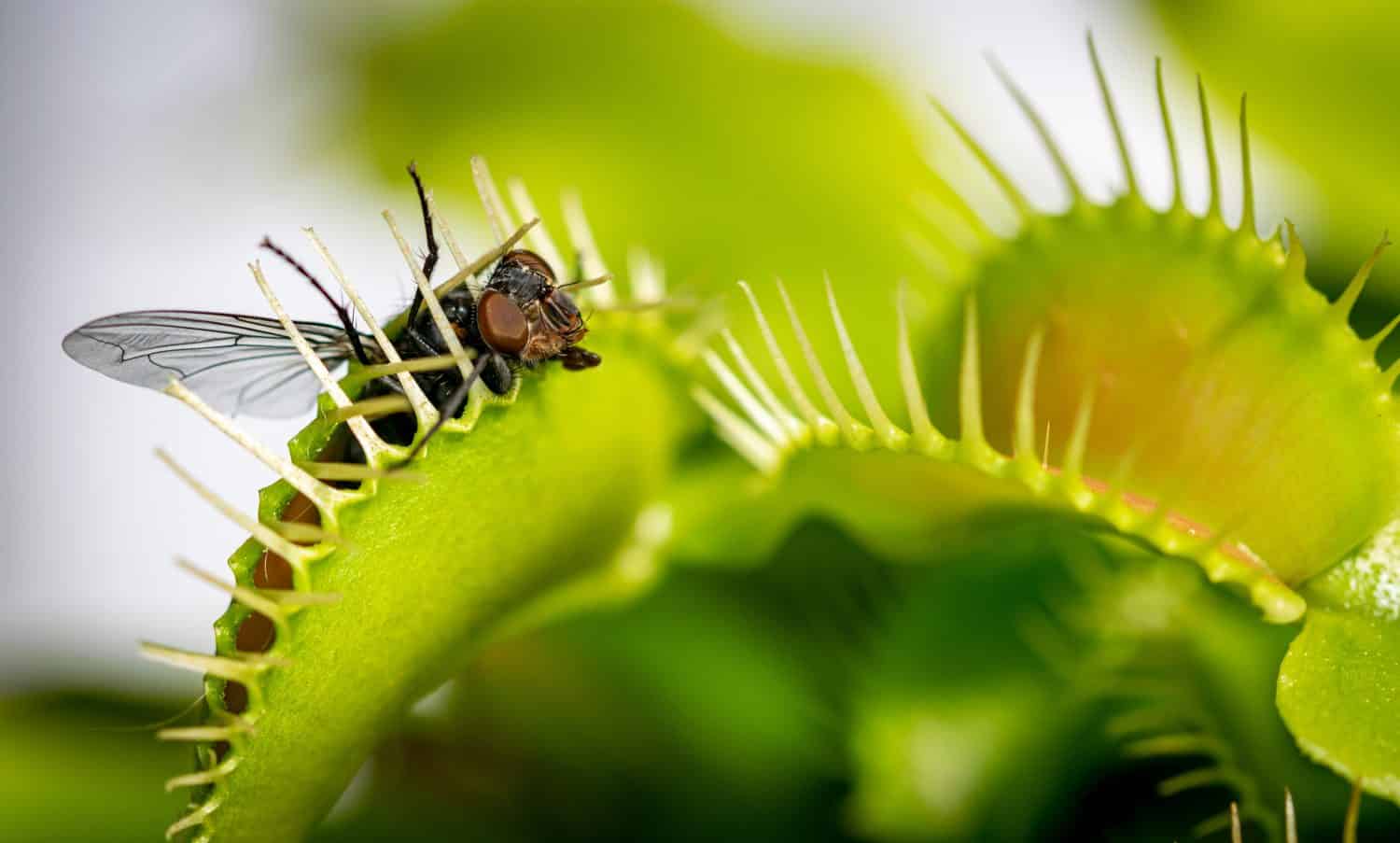
Carnivorous plants usually need about a week to fully digest an insect.
©josehidalgo87/Shutterstock.com
Only feed your Venus flytrap live insects. Although it sounds morbid, the insect must struggle against the trap in order to be properly digested by the plant.
6. Soil Content Is Important
Make sure that the soil you plant your Venus flytrap in is free of fertilizer and compost as this will kill your plant.
7. Growing Indoors Isnt Impossible, but It Isn’t Ideal
Venus flytraps typically perform better outdoors than indoors. However, indoor care is entirely possible, you may just need to give your plants some extra attention.
8. Consider Planting Companion Plants

These plants are relatively slow-growing.
©Olga Geo/Shutterstock.com
Companion plants will help your Venus flytrap thrive. Some of the best are Nepenthes, filiformis, and sundews.
9. Dry Soil Can Be Deadly
Pay special attention to your Venus flytrap during the summer months. During hot weather, the soil of the plant may dry out more rapidly which may be fatal.
Final Thoughts
In essence, Venus flytraps are a plant that both beginners and experienced plant lovers alike will enjoy caring for. These plants are somewhat low-maintenance, and like any other plant, adequate water and sunlight will be the two most important determining factors in their overall health. As long as you follow these tips, it is likely that your Venus flytrap will live for many years.
Thank you for reading! Have some feedback for us? Contact the AZ Animals editorial team.

